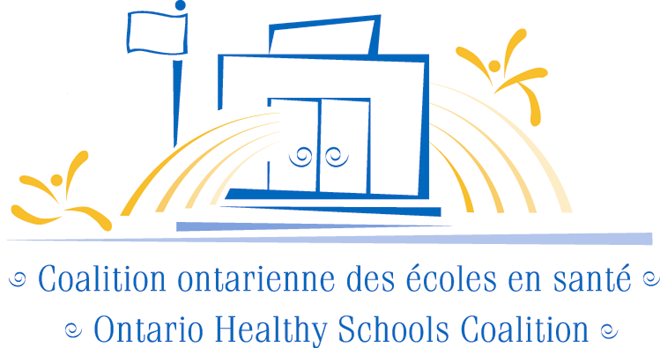Research in Brief

Implementing health promotion programs in schools
Implementing health promotion programs in schools: a realist systemic review of research and experience in the United Kingdom Schools have long been seen as a primary source of health promotion programs for children. Current health promotion practices in schools include such topics as: alcohol consumption, drug use, smoking, obesity, physical activity, sex and relationship education, and well‐being.
Recent reviews suggest that these programs make a substantial contribution to improving children’s health. Despite the importance of these programs, there has been a general lack of information on how to implement health promotion programs in schools.
This review is the first study to identify and evaluate the effectiveness of various implementation strategies.
What are effective strategies for implementing a new health promotion program in schools?
A recent review of 18 different implementation strategies available in the UK revealed that some strategies were important in effective delivery a program.
Some of the common characteristics of these successful strategies include: facilitating communications between school staff and parents, engaging teachers and pupils in a program, and integrating a program into the pre‐existing school schedule and educational goals. Read the full brief....
Implementing health promotion programs in schools: a realist systemic review of research and experience in the United Kingdom Schools have long been seen as a primary source of health promotion programs for children. Current health promotion practices in schools include such topics as: alcohol consumption, drug use, smoking, obesity, physical activity, sex and relationship education, and well‐being.
Recent reviews suggest that these programs make a substantial contribution to improving children’s health. Despite the importance of these programs, there has been a general lack of information on how to implement health promotion programs in schools.
This review is the first study to identify and evaluate the effectiveness of various implementation strategies.
What are effective strategies for implementing a new health promotion program in schools?
A recent review of 18 different implementation strategies available in the UK revealed that some strategies were important in effective delivery a program.
Some of the common characteristics of these successful strategies include: facilitating communications between school staff and parents, engaging teachers and pupils in a program, and integrating a program into the pre‐existing school schedule and educational goals. Read the full brief....

Physical Activity and School Engagement in Youth
There is increasing pressure placed on educators to increase academic performance scores. This can translate to the perception that me spent in the classroom is more beneficial to academic performance, compared to me spent promoting and doing physical activity.
This systematic review suggests that this perspective is flawed because providing opportunities for physical activity benefits academic achievement by improving school engagement.
The results suggest that the best practice for implementing physical activity for students, both children and adolescent, is one session of moderate or vigorous physical activity between academic lessons, such as providing 10‐minute breaks for physical activity focusing on dance or sport movements. Read the full brief...
There is increasing pressure placed on educators to increase academic performance scores. This can translate to the perception that me spent in the classroom is more beneficial to academic performance, compared to me spent promoting and doing physical activity.
This systematic review suggests that this perspective is flawed because providing opportunities for physical activity benefits academic achievement by improving school engagement.
The results suggest that the best practice for implementing physical activity for students, both children and adolescent, is one session of moderate or vigorous physical activity between academic lessons, such as providing 10‐minute breaks for physical activity focusing on dance or sport movements. Read the full brief...
|
Do the benefits of social and emotional learning programs last? Do the beneficial effects, for students, of social and emotional learning programs remain after the programs are gone? Are they really predictors of future success? A recent meta‐analysis of 82 school‐based universal social and emotional learning programs involving more than 97,000 elementary and secondary students showed that the benefits to students remained significant after six or more months. Social emotional learning focuses on developing five competencies: self‐awareness, self‐management, social awareness, relationship skills, and responsible decision making. The research around such interventions have shown that social emotional learning interventions have been successful in teaching specific skills that support social and academic adjustment, as well as decreasing conduct problems and emotional distress. These are skills that can support school, career and life success while protecting students from negative outcomes. Skills developed through the intervention showed to be the best predictor of long term benefit. Effects were consistent across multiple demographic factors such as ethnicity, socioeconomic status and school location. Read the full brief... |

Enhancing students social and emotional learning Do programs led by teachers and offered to all students in a classroom, improve the social and emotional learning of students? A recent meta-analysis of 213 school-based, universal social and emotional learning programs involving more than 270,000 students concludes that students who participated in the programs showed significantly improved social and emotional skills, attitudes, behaviour, and improvement in academic performance that reflected an 11 percentile-point gain in achievement. Students do not typically learn alone, and social and emotional skills can help improve their academic achievement. Because these skills are so important to learning, it is important that schools and families effectively teach these skills to ensure student success. Our students come from diverse cultural and social backgrounds, with varied abilities and motivations for learning. Students who lack social-emotional competencies may become less connected to school as they progress from elementary to middle to secondary school, and this lack of connection hinders their academic performance. Read the full brief... |

Effectiveness of Mindfulness Based Interventions for Youth in Schools
Mindfulness has been described as “the self‐regulation of attendance so that it is maintained on immediate experience… characterized by curiosity, openness, and acceptance” (Bishop et al., 2004). Although there are many definitions of mindfulness, a common theme is that mindfulness is a way of directing attention.
Mindfulness‐based interventions have been broadly shown to be effective for a variety of psycho‐social problems, and may be effective with youth. There is a broad range of mindfulness based interventions for youth, and these may range from single session workshops in the community, to multi‐week interventions imbedded in the young persons’ daily life.
Helping students to develop skills in directing their attention has obvious usefulness in learning and classroom management, and many educators are choosing to include mindfulness exercises or practices as part of their classroom routines. A recent systematic review has examined what we know about some of the effects of mindfulness programs in school settings. Read the full brief...
Mindfulness has been described as “the self‐regulation of attendance so that it is maintained on immediate experience… characterized by curiosity, openness, and acceptance” (Bishop et al., 2004). Although there are many definitions of mindfulness, a common theme is that mindfulness is a way of directing attention.
Mindfulness‐based interventions have been broadly shown to be effective for a variety of psycho‐social problems, and may be effective with youth. There is a broad range of mindfulness based interventions for youth, and these may range from single session workshops in the community, to multi‐week interventions imbedded in the young persons’ daily life.
Helping students to develop skills in directing their attention has obvious usefulness in learning and classroom management, and many educators are choosing to include mindfulness exercises or practices as part of their classroom routines. A recent systematic review has examined what we know about some of the effects of mindfulness programs in school settings. Read the full brief...
|
Are Positive Youth Development Interventions Effective?
Problem behaviours, such as substance misuse and violence, increase during adolescence. Moreover, adolescents who engage in one problem behaviour are more likely to engage in others. These trends are concerning because problem behaviours can perpetuate into adulthood and lead to adverse physical, psychological and occupational consequences. Positive youth development interventions are thought to be essential to the prevention of problem adolescent behaviour by supporting young people in acquiring a sense of competence, self‐efficacy, belonging and empowerment. This may promote positive behaviour and reduce the likelihood of risky behaviour. A recent systematic review examined the current literature to evaluate the effectiveness of positive youth development interventions in promoting positive outcomes and reducing problem behaviours. Read the full brief... |

After-School Programs for At-Risk Youth Youth who are at greater risk for low academic achievement, low school attendance, low school engagement, and behavioural problems are often described as “at‐risk”. Left unattended, these problems can easily develop into substance abuse, criminal behaviour, and other long‐term anti‐social problems. After‐school programs are designed to meet many needs, ranging from providing reliable childcare to decreasing behavioural problems at‐risk youth face. After‐school programs are programs that run after school, providing extra‐curricular and academic activities that include: play, sports, community service, music, arts and crafts, homework help, and academic enrichment. Do after‐school programs affect externalizing behaviours and school attendance in primary and secondary at‐risk students? A recent systematic review and meta‐analysis attempted to determine whether after‐school programs affect externalizing behaviours (any problematic behaviour ) and school attendance. The programs under review ranged from academically oriented to mainly extra‐curricular. The results did not show any significant impact on externalizing behaviour or school attendance rates when at risk students were enrolled in after‐school programs compared to at‐risk students who were not enrolled. Read the full brief... |
|
The Knowledge Network for Student Well‐Being is a project of the Knowledge Network for Applied Educational Research Partners in the KNSWB include: Offord Center for Child Studies School Mental Health Ontario PREVNet The Social Planning Network of Ontario Ontario Healthy Schools Coalition |


